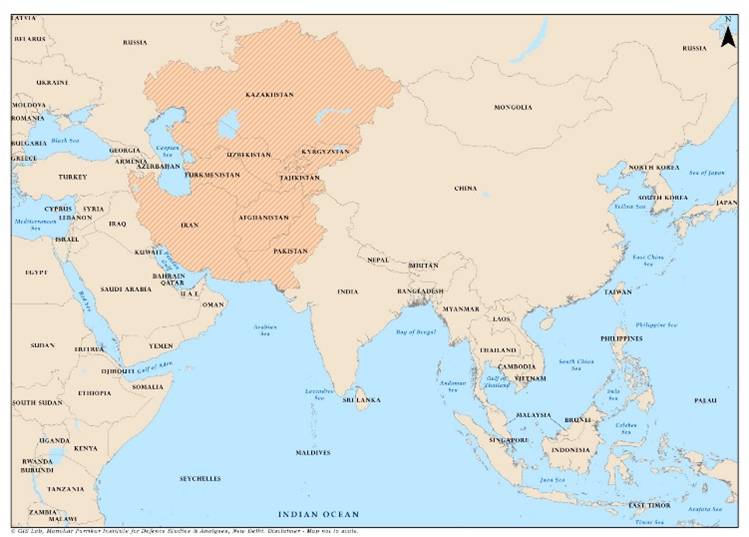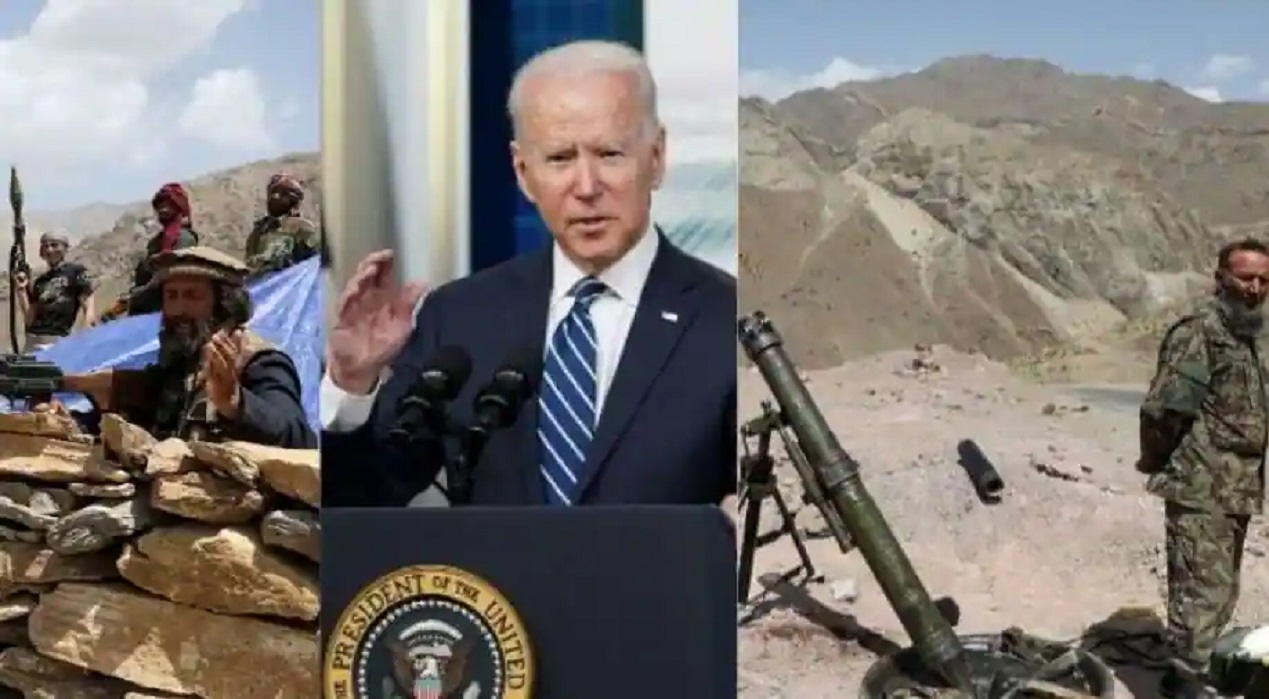The sudden withdrawal of US forces on the night of 1st July 2021 from Bagram created a piquant situation not only for Afghanistan security forces but also for the entire world. While a withdrawal was always in the offing, with a deadline being previously announced by the US, yet the clandestine manner in which the US forces left Bagram has put the spotlight on Washington’s claims of being a genuine leader of the free world. The hasty action by the US has endangered peace and led to serious disquiet in the neighbourhood about the emerging nature of geopolitics in the region.
The US had been using the Bagram base as a vanguard against anti-terror operations. One of its key successes has been the near annihilation of Al Qaida from Afghanistan. However, this success has been tempered by its failure to eliminate the threat posed by Pakistan backed Taliban, IS (Khorasan) and Haqqani network.
Today, the discreet US withdrawal has put the Afghanistan internal security apparatus into major despair. The Taliban appear emboldened to undertake a frenzied blitzkrieg of violence to capture vast swathes of Afghan territory. There are reports of Taliban now controlling more than 200 districts including Afghanistan’s northern borders with Tajikistan, Uzbekistan and Turkmenistan. Incidentally, these northern areas had earlier provided the pièce de résistance from where the Northern Alliance launched their operations to evict the Taliban in 2001.
The disarray in Afghan national army is reflected in more than 1,000 soldiers having fled to Tajikistan after Taliban seized control of Shir Khan Bandar outpost on Afghanistan-Tajikistan border. This raised alarm bells in Central Asian countries who remain apprehensive of spill over of violence, radical ideology and migrants, given the porous boundaries and strong cross-border ethnic linkages. Tajikistan and Uzbekistan have since announced joint military drills with Russia’s 201st Motorised Brigade near Afghanistan border. The Russian Motorised Brigade, meanwhile, has gone into a mission mode by enhancing its force profile and reinforcing its base with additional equipment to thwart any potential contingency. It is likely that the presence of Russian military on the borders will deter the Taliban forces to launch an attack on Central Asian republics. Nevertheless, the return of radical groups like East Turkestan Islamic Movement (ETIM) cannot be ruled out in the long run.
Implications for Central Asia
The sudden US withdrawal appears to have created serious distrust amongst Central Asian countries about Washington’s role as a reliable security partner in the region. The general perception is that of the US is ‘not honouring’ its commitment to Afghanistan. If they could do that to Afghanistan, which hosted them for 20 years, they can do it to anybody, is the common refrain from neutral observers.1 This is in sharp contrast to 2001, when several Central Asian countries made available their territories as bases to the US and its allies. To quote John Herbst, a former US ambassador to Uzbekistan, ‘we have taken a hit through our failures in Afghanistan’.2 The land locked Central Asian countries needed connectivity to sea ports through Afghanistan, which was promised by the US backed government in Kabul. The withdrawal has hit the Central Asian countries not only from a moral or security perspective but also from an economic angle, thereby setting up a chain of hectic parleys in the region. These include a regional conference in Uzbekistan on connectivity, meetings of SCO Foreign and Defence Ministers, meeting of troika countries, namely US, Russia and China, and the proposed meeting of troika plus which includes Pakistan, Iran, Afghanistan and India.
Quest for Military Bases
Russia has military bases in Tajikistan and Kyrgyzstan. It holds regular security drills with Central Asian countries under the ambit of Collective Security Treaty Organization (CSTO). China has an outpost in Tajikistan to prevent radical Islamic elements teaming up with separatists in Xinjiang.3 Therefore, relations with Central Asian states especially countries bordering Afghanistan are important to the US for carrying out residual combat operations in the region. Today, it appears that the US has stepped up its search for a military base in the region. This facility could also be used to relocate Afghans who had previously worked with the US forces.
This calculus has led to hectic US diplomatic parleys in the region including the establishment of a quad alliance comprising US, Pakistan, Afghanistan and Uzbekistan. Notably, Russia remains averse to US military bases in Central Asia - its traditional sphere of influence.
Russia has been pursuing a twin track policy involving diplomacy backed by military drills in Uzbekistan and Tajikistan to safeguard its security interests and keep the Eurasian region stable. The mandate of the Russian base in Tajikistan has been extended by Tajikistan up to 2042.4 Crucially for Russia, Uzbekistan appears to be cold to US feelers for a base citing its constitutional provisions of not allowing foreign bases.5 In such circumstances, the crucial question is whether the US will be able to secure a much needed anchorage in Central Asia like it did 20 years ago.
Role of China
China has emerged as the most enterprising actor in the geo-politics of the region. It has significant leverages with Pakistan anchored in its CPEC and economic clout. The exit of the US opens up space for its greater expansionist designs.6 It has recently mooted a proposal to spread its CPEC tentacles to Afghanistan (through an offshoot from the main artery in Baluchistan). To secure its flank on the west, it has signed a strategic agreement with Iran. There are reports of formal talks between Chinese FM Wang Yi and a Taliban delegation led by its Deputy Leader Abdul Baradar having taken place.7 The Taliban on its part appears restrained lately on the issue of persecution of Uyghur Muslims in Xinjiang. Arguably, these developments point to an emerging Chinese narrative. The moot question now is not whether but when would China expand its footprints in Afghanistan.
The death of several Chinese citizens in an explosion and firing on its engineers in Pakistan has made China realise the gravity of Pakistan’s internal security situation. The challenges being faced by Chinese citizens working on CPEC projects has led to China berating Pakistan openly. Pakistan Foreign Minister had to make a hasty visit to China to cool down Beijing’s temper.8 China has since incorporated additional security layer on CPEC projects in Pakistan by employing Private Military Contractor (PMC) personnel who are ex Chinese military personnel.
The key question is, will China follow a similar arrangement in case it extends its CPEC umbrella to Afghanistan or will it send regular military personnel? The delicate security situation and void in Afghanistan provides China a perfect alibi for greater intervention in Afghanistan on which it has a covetous gaze not only for its connectivity but also mineral wealth. China had earlier purportedly denied having plans of setting up a military base in Afghanistan to protect its promised investments and infrastructure projects.9 Will a bonhomie with Pakistan backed Taliban now make way for such an expedition by China? What USSR and USA could not achieve militarily, China is arguably wanting to achieve economically through clever jockeying on BRI and strategic partnerships with all regional countries in the neighbourhood.
There are enough ‘Chinese Whispers’ of its entry into Afghanistan in the near future.10 It already has strategic partnerships with Iran and Pakistan. If China gains an entry into Afghanistan, it will control a geographical space encompassing Iran, Afghanistan, Pakistan and Central Asia and the outlets to the Arabian Sea - a frightening mirror image of its canny design in the South China Sea!! Perhaps this is a contemporary embellishment of McKinder’s heartland theory of controlling the geographical space at the crossroads of Europe, Africa and Asia.

India’s Options
India appears to have limited options in Afghanistan in the unfortunate event of a Taliban take-over of Kabul. India’s land access to Central Asia and Afghanistan is currently possible only through Iran, which is not an economically viable option.11 India is being kept out of any important role in Afghanistan by the global players. Thus, India did not find a place in the connectivity talks in the Quad comprising US, Uzbekistan, Afghanistan and Pakistan. A place in Troika plus was offered only after Foreign Minister Dr. Jaishankar’s talks with his Russian counterpart. Even earlier, India was left at the seams during Doha peace talks.
Notably, India has provided Afghanistan with military hardware and training which has helped the current regime ward off the Taliban threat to an extent. First it is imperative that India’s support in terms of military hardware not only continues but also needs to be enhanced. India should also collaborate with like-minded powers to augment the air power of ANDSF, an area where they appear to be thin after the US withdrawal. Alongside, India should impress upon the US to continue with their air based operations. Secondly, India should continue to try convince the world powers, especially Russia, China and Iran, that the Taliban cannot be trusted as evident during the Doha talks.
It is likely that the Taliban will stoke violence and spill radical Islam in the neighbourhood including Xinjiang once it re-establishes itself in Kabul. It is, therefore, necessary that India works with Central Asia and other neighbours to ensure the Afghan government’s survival.12 India could invoke the Regional Anti-Terror Structure (RATS) mechanism of SCO not to acquiesce to Taliban. It is imperative that the Taliban are not allowed to stabilise their control over new territories.
Today, Afghanistan runs the risk of giving away its hard earned, albeit nascent, recovery. The perils of a Taliban controlled Afghanistan might be too grave for the world community to even fathom and reconcile to unless strong unified remedial measures are taken soon. Time is of essence.
Endnotes
- https://www.theguardian.com/commentisfree/2021/jul/04/observer-view-on-us-and-nato-withdrawal-from-afghanistan accessed on July 30, 2021
- https://www.foxnews.com/world/afghanistan-us-staging-area by Peter Aitkin, accessed on July 30, 2021
- https://www.washingtonpost.com/world/asia_pacific/in-central-asias-forbidding-highlands-a-quiet-newcomer-chinese-troops accessed on July 30, 2021
- https://economictimes.indiatimes.com/news/defence/russia-holds-military-drills-in-tajikistan-amid-taliban-offensive accessed on July 30, 2021
- https://pajhwok.com/2021/05/11/wont-host-foreign-troops-military-bases-uzbekistan accessed on July 30, 2021
- Brahma Chellaney, “China moves swiftly to exploit the void in Afghanistan”, Nikkei Asia, July 27, 2021
- Ananth Krishnan, ‘’ China Foreign Minister Wang Yi hosts Taliban, calls them ‘pivotal force’”, Hindu, July28, 2021
- https://economictimes.indiatimes.com/news/defence/pakistan-foreign-minister-shah-mahmood-qureshi-to-visit-china-on-friday, accessed on July 30, 2021
- https://www.smh.com.au/world/asia/china-to-set-up-military-base-of-500-troops-in-afghanistan accessed on July 30, 2021
- https://www.livemint.com/news/world/china-waiting-for-an-opportunity-to-enter-afghanistan-amid-us-withdrawal accessed on July 30, 2021
- Shishir Gupta and Rezaul H Laskar, “India, Iran to boost economic viability of Chabahar port”, Hindustan Times, Dec 27, 2019
- Subhashini Haider, “Needed, a more unified Asian voice for Afghanistan”, Hindu, July28, 2021
(The paper is the author’s individual scholastic articulation. The author certifies that the article/paper is original in content, unpublished and it has not been submitted for publication/web upload elsewhere, and that the facts and figures quoted are duly referenced, as needed, and are believed to be correct). (The paper does not necessarily represent the organisational stance... More >>
Image Source: https://cdn.wionews.com/sites/default/files/styles/story_page/public/2021/07/02/200797-bb111.jpg










Post new comment